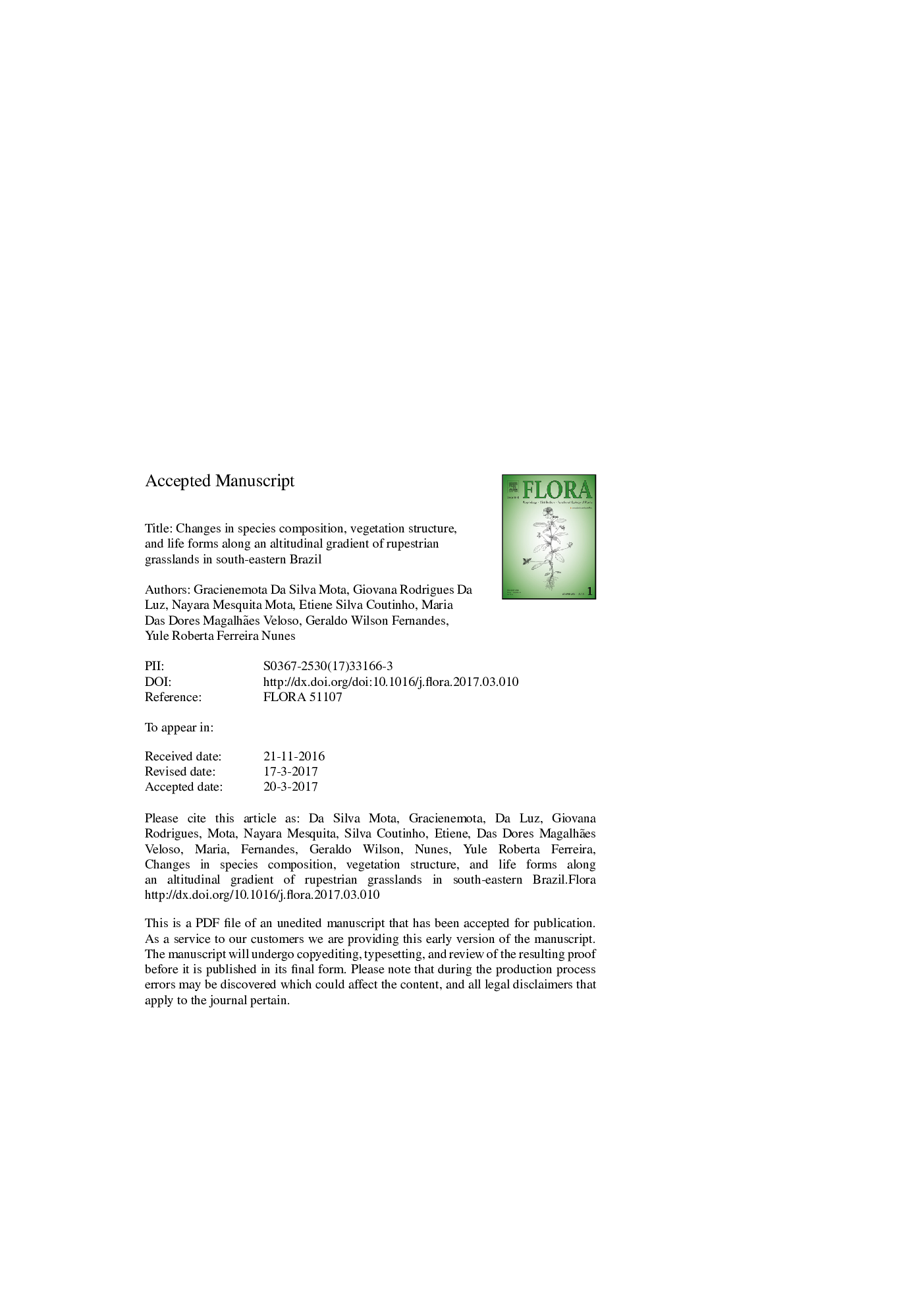| Article ID | Journal | Published Year | Pages | File Type |
|---|---|---|---|---|
| 8470219 | Flora - Morphology, Distribution, Functional Ecology of Plants | 2018 | 42 Pages |
Abstract
Rupestrian grasslands comprise a mosaic of plant communities that dominate high elevations formation associated with quartzite soil in Eastern Brazil. This study evaluated changes in floristic composition, structure, diversity, and life forms spectra along an altitudinal gradient in the rupestrian grasslands in south-eastern Espinhaço Mountains Range. Sampling was conducted in seven sites at 100-m elevation intervals (800-1400 m). Thirteen 100-m2 plots were established at each elevation; within each plot all woody individuals and rosettes with a diameter at soil height â¥Â 1 cm were sampled. Differences in vegetation structure, diversity, species composition, frequency and richness of each life forms were analyzed in relation to soil attributes and elevation. In total, 9672 individuals belonging to 278 species were sampled across the altitudinal gradient. Plant height, species richness, diversity and evenness, frequency and richness of phanerophytes and chamaephytes decreased with elevation. The β diversity represented 92.7% of the total diversity and species turnover is numerically the primary mechanism that determines the β diversity. Most species with higher importance value also had the highest indicator values. Spatial factors, spatially structured environment and the environment explained 34% of the variation in species distribution. Floristic composition differed across elevations, and soil pH, solution equilibrium P, base saturation, hydrogen + aluminum, organic matter, and K were related to species distribution. The results showed marked changes in the rupestrian grasslands along the altitudinal gradient and indicated that soil is an important driver of community change.
Related Topics
Life Sciences
Agricultural and Biological Sciences
Ecology, Evolution, Behavior and Systematics
Authors
Graciene Silva Mota, Giovana Rodrigues Luz, Nayara Mesquita Mota, Etiene Silva Coutinho, Maria das Dores Magalhães Veloso, Geraldo Wilson Fernandes, Yule Roberta Ferreira Nunes,
